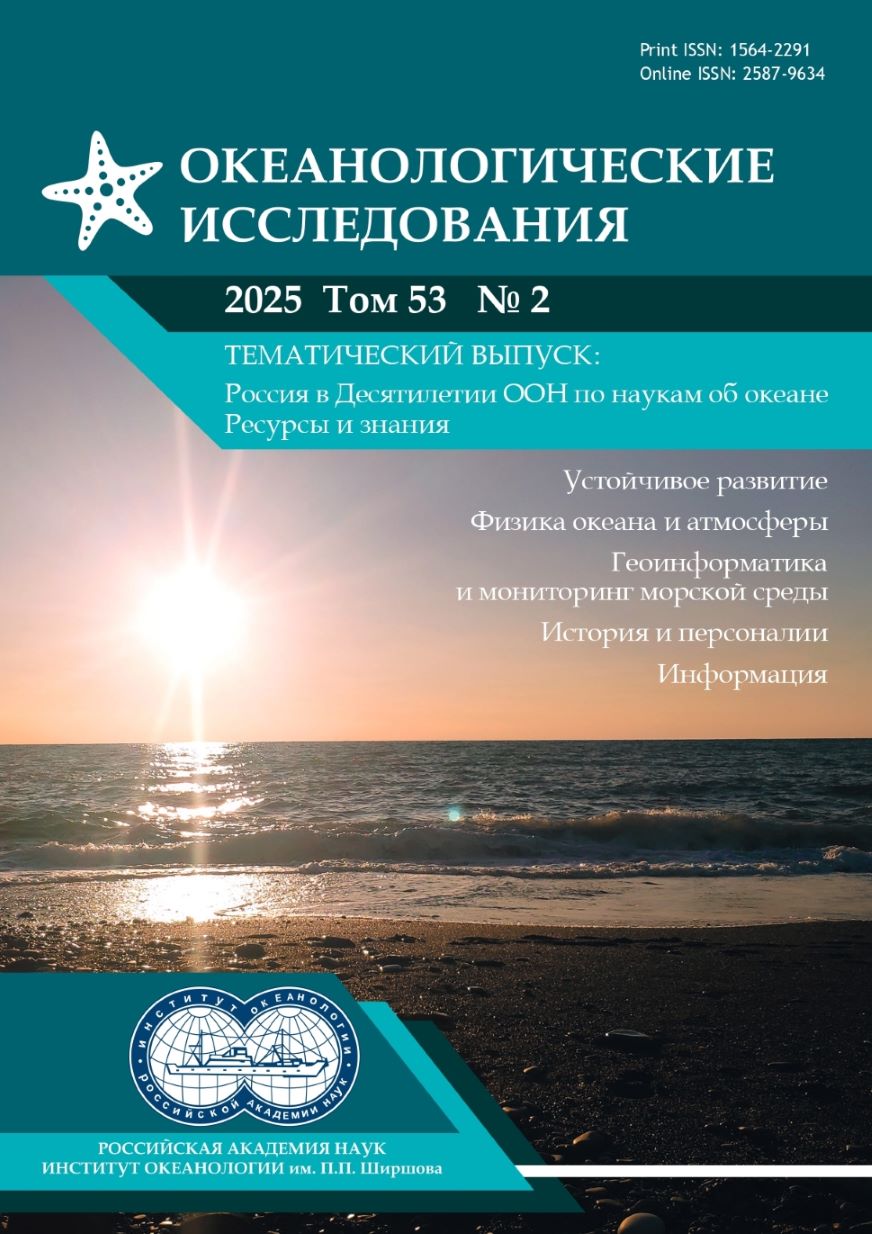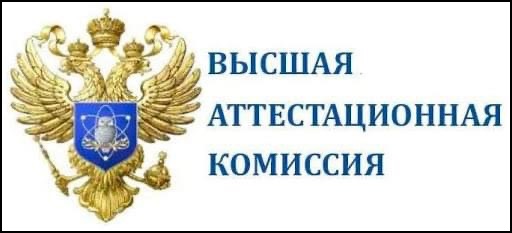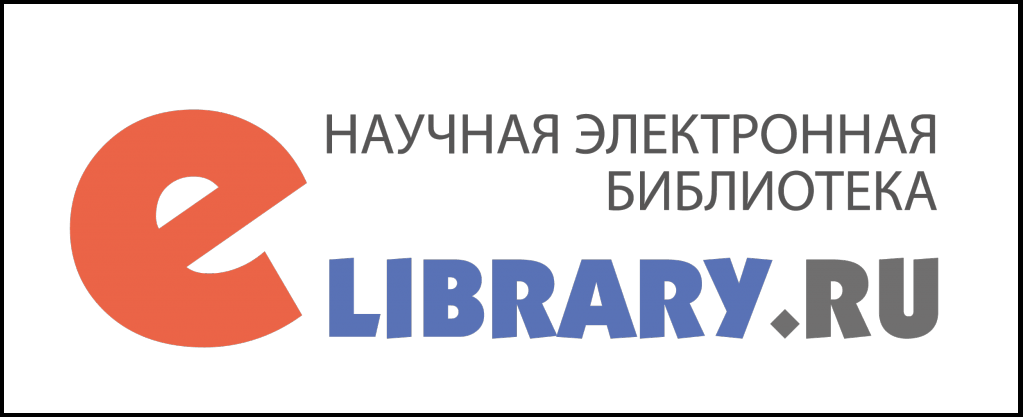ПЕРСПЕКТИВНЫЕ ИНФОРМАЦИОННЫЕ ТЕХНОЛОГИИ ДЛЯ МОДЕРНИЗАЦИИ ЕСИМО
Аннотация
Статья посвящена перспективным информационным технологиям для модернизации Единой государственной системы информации об обстановке в Мировом океане (ЕСИМО), http://esimo.ru. Актуальность данной работы определяется необходимостью решения задач в рамках Десятилетия ООН наук об океане в интересах устойчивого развития, а также модернизации ЕСИМО. Целью статьи является осведомление читателей о перспективных информационных технологиях, которые предлагается применить в области океанологии. Рассмотрены разработка и процессы внедрения информационных технологий, которые либо уже применяются, либо находятся на этапе создания, либо будут использоваться в задачах развития гидрометеорологического обеспечения пользователей. Представлены технологии интеграции разнородных и распределенных данных на основе метаданных и создания на этой основе цифрового двойника. Определены сервисы для автономного выявления опасных и экстремальных явлений, предупреждения о различных морских угрозах для населения и руководителей предприятий. Предложены методы и средства искусственного интеллекта в виде графов знаний для связывания различных типов и видов данных, баз знаний для автоматизации массовой обработки океанографических данных. За счет внедрения предложенных информационных технологий будет существенно расширен функционал ЕСИМО, повысится уровень автоматизации обработки данных ‒ от сбора до принятия решений.
Литература
- АСУНП – Автоматизированная система учета наблюдательных подразделений Росгидромета. URL: http://asunp.meteo.ru/.(дата обращения: 12.08.2024).
- Вязилов Е. Д., Малахов С. С., Аскаров А. Р. Применение технологий искусственного интеллекта для поддержки решений руководителей предприятий с использованием гидрометеорологической информации // Метеорология и гидрология. 2024. № 5. С. 87–96.
- Вязилов Е. Д., Мельников Д. А. Повышение осведомленности руководителей предприятий морской деятельности для адаптации к опасным и экстремальным явлениям // Океанологические исследования, 2024. Т. 52. № 2. C. 169–182. https://doi.org/10.29006/1564-2291.JOR-2024.52(2).9.
- Вязилов Е. Д., Мельников Д. А., Чуняев Н. В., Кобелев А. Е. Метаданные – основа автоматизации по созданию информационной продукции. Инфраструктура научных информационных ресурсов и систем: Сборник избранных научных статей // Труды Четвертого Всероссийского симпозиума (С.-Петербург, 6–8 октября 2014 г.) / Под ред. Е. В. Кудашева, В. А. Серебрякова. Т. 1. М.: ВЦ РАН. 2014. С. 52–68.
- Вязилов Е. Д., Михайлов Н. Н., Кобелев А. Е. Единая государственная система информации об обстановке в Мировом океане: интеграция информационных ресурсов и метаданные. ИКИ РАН. Пятая юбилейная открытая Всероссийская конференция «Дистанционное зондирование земли из космоса». Москва. 12–16 ноября 2007 г. http://d33.infospace.ru/d33_conf/2008_pdf/2/9.pdf.
- Вязилов Е. Д. Цифровая трансформация гидрометеорологического обеспечения. Подходы по реализации. Обнинск: ВНИИГМИ-МЦД, 2021. Т. 1: 356 с.; Т. 2: 355 с.
- Вязилов Е. Д. Цифровые двойники и цифровые модели в области наук о Земле. ENVIROMIS’2024. International Conference on Environmental Observations, Modeling, and Information System. July 01–06, 2024. Tomsk. Russia. Selected papers. С. 220–226. https://enviromis.ru/inc/files/2024/env24abs_web.pdf/.(дата обращения: 21.01.2025).
- ЕСИМО, 2014: Единая государственная система информации об обстановке в Мировом океане. http://esimo.ru/.(дата обращения: 12.12.2024).
- Заявка на регистрацию базы данных «Локальные пороговые значения показателей гидрометеорологических условий». Роспатент. 2024.
- Методические указания по подготовке ежегодного доклада «О комплексной оценке состояния национальной безопасности Российской Федерации в области морской деятельности». 2011. Одобрены Морской коллегией при Правительстве Российской Федерации 6 июля 2011 г., протокол № 2 (16), с изменениями от 26.12.2011 № П4-54421, представляемого Правительством Российской Федерации Президенту Российской Федерации.
- Мэйянь Цзяо, Ляньчунь Сун, Тун Цзян, Ди Чжан, Цзяньцин Чжай Выпуск в Китае заблаговременных предупреждений с учетом возможных последствий и оценки рисков // Бюллетень ВМО. № 64 (2). 2015. C. 9–12.
- Пересмотренная дорожная карта для Десятилетия Организации Объединенных Наций, посвященного наукам об океане в интересах устойчивого развития. Обновленный вариант версии 2.0 от 10.06.2018. IOC/EC-LI/2, Annex 3. МОК ЮНЕСКО. Пятьдесят первая сессия Исполнительного совета ЮНЕСКО. Париж, 3–6 июля 2018. Оригинал: английский.
- Потапов И. И., Солдатов В. Ю. Искусственный интеллект: проблемы и перспективы // Проблемы окружающей среды и природных ресурсов. 2021. № 8. C. 3–18.
- Стратегия развития морской деятельности Российской Федерации до 2030 года. Утв. распоряжением Правительства РФ от 08.12.2010 г. № 2205-р.
- AI in Meteorology. Industry 2022. Azati Company. 19 December 2022. https://azati.ai/artificial-intelligence-in-meteorology/?ysclid=m09woxlitg155305830.(access date: 26.08.2024).
- Andreichuk A. P., Gurko A. V. Trends in artificial intelligence and robotics technologies in the Arctic: the Russian experience // J. Mining informational and analytical bulletin. No. 10-2. 2022. P. 24–38.
- Artificial Intelligence applied to weather forecasting. https://ict.moscow/case/af7945dacf2b637c18d37470/?ysclid=m09v5m8q1c177429719/ (дата доступа: 26.08.2024).
- Boucher Philip. Artificial intelligence: How does it work, why does it matter, and what can we do about it? Study Panel for the Future of Science and Technology, European Parliament. June 2020. 64 p.
- CDIF – Cross Domain Interoperability Framework. https://github.com/Cross-Domain-Interoperability-Framework?ysclid=lzyh3jpr6n23169162.(access date: 12.08.2024).
- ENVIROMIS’2024. International Conference on Environmental Observations, Modeling, and Information System. July 01–06 2024. Tomsk. Russia. Selected papers.
P. 227–267. https://enviromis.ru/inc/files/2024/env24abs_web.pdf. - FAIR Principles. GOFAIR. 2016. https://www.go-fair.org/fair-principles/.(access date: 17.06.2024).
- Fueling the AI transformation: Four key actions powering widespread value from AI, right now. Deloitte’s State of AI in the Enterprise, 5th Edition report. October 2022. 49 p.
- Jinfeng Wen, Peng-Fei Han, Zhangbing Zhou & Xu-Sheng Wang Lake level dynamics exploration using deep learning, artificial neural network, and multiple linear regression techniques. https://link.springer.com//article/10.1007/s12665-019-8210-7?fromPaywallRec=false.(access date: 26.08.2024).
- Meteum 2.0. https://yandex.ru/pogoda/maps/nowcast?le_Lightning=1.(access date: 12.08.2024).
- Stahl Bernd Carsten. Artificial Intelligence for a Better Future. An Ecosystem Perspective on the Ethics of AI and Emerging Digital Technologies. Foreword by Julian Kinderlerer. Springer. Centre for Computing and Social Responsibility De Montfort University. Leicester. UK. 2021. 124 p. https://doi.org/10.1007/978-3-030-69978-9.
- Taesam Lee, Vijay P. Singh, Kyung Hwa Cho Deep Learning for Hydrometeorology and Environmental Science. 2021. Book series: Water Science and Technology Library.
Vol. 99. 204 p. https://link.springer.com/book/10.1007/978-3-030-64777-3. - Tomorrow Company. URL: https://www.tomorrow.io/blog/tomorrow-io-unveils-first-weather-climate-generative-ai/.(access date: 12.08.2024).
- TRUST– Core Trustworthy Data Repositories Requirements. Version: 01.00. 2016. ICSU. World Data System. 14 p. http://www.coretrustseal.org/wp-content/uploads/2017/01/Core_Trustworthy_Data_Repositories_Requirements _01_00.pdf (access date 02.10.2024).
- Zagorecki Adam, Johnson David, Ristvej Jozef Data mining and machine learning in the context of disaster and crisis management // International J. of Emergency Management. No. 9 (4), January, 2013. P. 351–365. https://doi.org/10.1504/IJEM.2013.059879.
Передача авторских прав происходит на основании лицензионного договора между Автором и Федеральным государственным бюджетным учреждением науки Институт океанологии им. П.П. Ширшова Российской академии наук (ИО РАН)













